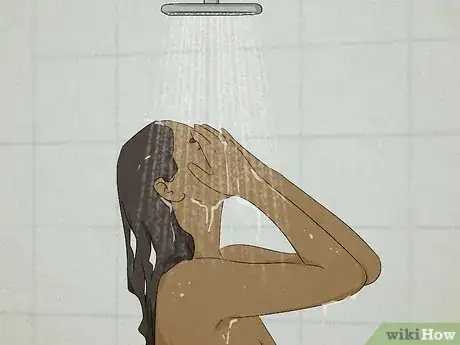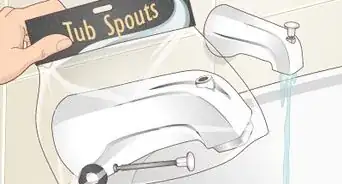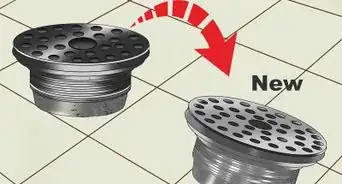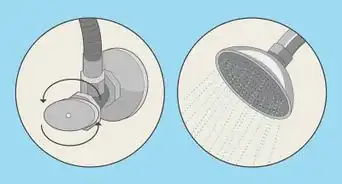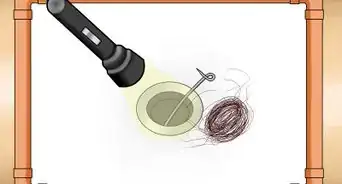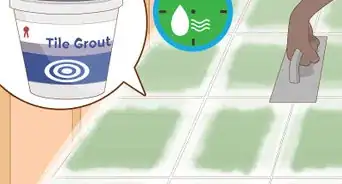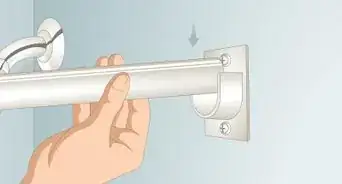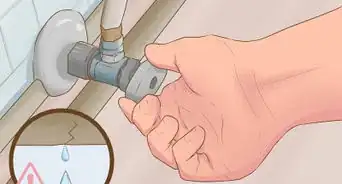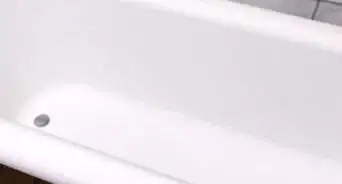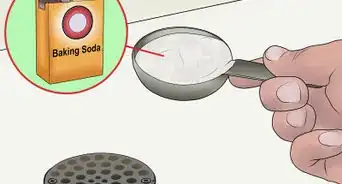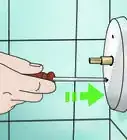This article was co-authored by wikiHow staff writer, Devin McSween. Devin McSween is a wikiHow Staff Writer. With a background in psychology, she has presented her research in social psychology at a variety of conferences and has contributed to several manuscripts for publication. At wikiHow, Devin combines her love of writing and research with the goal of bringing accessible information to wikiHow readers that will help them learn and grow. She earned her BS in Psychology from the College of Charleston.
There are 15 references cited in this article, which can be found at the bottom of the page.
Learn more...
Your new apartment has it all: great views, lots of light, fun neighbors, and…hard shower water. Okay, having a shower that leaves your hair dry and frizzy probably wasn’t on your amenity checklist. Luckily, there’s a simple fix to improve your hard water: add a shower filter! In this handy article, we’ll tell you how to choose and install a shower filter for your apartment, plus explain how it brings life back to your skin and hair. Read on to get your shower water filtered!
Things You Should Know
- Check your apartment’s lease to see if you’re allowed to install a shower filter.
- Choose an inline or all-in-one shower filter that uses KDF filtration and is certified by the National Sanitation Foundation (NSF).
- Install the filter by removing your shower head and wrapping plumber’s tape around the pipe threads. Flush the filter with water then screw it onto the pipe.
- Shower filters remove chlorine from water to help hydrate your skin and hair.
Steps
Choosing a Shower Filter
-
1Check your lease to confirm you're allowed to install a shower filter. Before you go out and buy a shower filter, check that you’re not violating your lease by adding one to your shower. Simply find your lease’s rules about making small repairs. If you can’t find any specific rules, reach out to your landlord directly to make sure it’s okay.[1]
-
2Buy an inline filter or an all-in-one filter. Shower filters come in 2 main styles: inline and all-in-one. Inline filters are an attachment that you install behind your shower head. It works by filtering the water before it reaches the shower head. All-in-one filters have a filter built into the shower head itself.[2]
- Both options are easy to install and cost around $20-60. So, simply decide if you want a new shower head along with your filter.
Advertisement -
3Select a filter with a KDF filtration system certified by the NSF. Shower filters use several different processes to filter out chemicals and minerals like chlorine. While charcoal and Vitamin C filters can be effective, KDF (kinetic degradation fluxion) filters are typically the best on the market.[3] Just make sure your filter of choice is certified for use by the NSF, or National Sanitation Foundation.[4]
- KDF filters are made with copper and zinc. These metals transform chlorine into a chloride, which is less damaging to your skin and hair. They also help kill bacteria.
Installing a Shower Filter
-
1Unscrew your shower head from the pipe counterclockwise. Use your hands to rotate your shower head to the left and off of the shower head pipe arm. Once it's fully removed, set it to the side in a safe location.[5]
- If the shower head is on too tight to loosen it with your hands, wrap a rag around the pipe. Then, use channel-lock pliers to turn the shower head counterclockwise.[6]
-
2Wrap the exposed pipe threads with plumber’s tape or teflon tape. Plumber’s tape helps prevent leaks by giving your filter and shower head a tighter seal around the pipe. Simply clean the threads with a wet cloth or brush to remove any dirt or debris. Then, wrap the tape around the threads about 3 to 6 times to ensure you have a good seal.[7]
- If there is already tape on the threads, remove it and add fresh tape.
- Optionally, wrap the threads on your shower filter with plumber’s tape, too.
-
3Flush the filter with water for 5 minutes. Running water through the filter activates the filter cartridge and removes any buildup inside. Just read your filter’s instructions to find out what temperature water to use, as some companies recommend using hot, cold, or lukewarm water.[8]
- For inline filters: flush with water after you install the filter on the shower pipe.
- For all-in-one filters: flush the filter with water in the sink before you attach it to the pipe.
-
4Screw the filter clockwise onto the pipe. Place the filter on the pipe and use your hands to rotate it to the right. Tighten the filter all the way so that it is fully snug against the pipe.[9]
- If you’re having trouble tightening the filter all the way, use a channel-lock plier to screw it on the pipe.
-
5Attach your shower head if you’re installing an inline filter. If you’re not replacing your shower head with an all-in-one shower filter, screw your shower head onto the exposed threads of the inline filter. Simply use your hands to turn it clockwise over the threads and tighten it to the filter.[10]
-
6Turn on the shower and check for leaks along the pipe and filter. To make sure your filter is tightly attached to the pipe, start your shower. Look for running water where the filter screws into the pipe. If you find any leaks, turn off the water and tighten the filter. Keep testing the water until you see no more leaks.[11]
- For inline filters, look for leaks where the shower head screws into the filter, too.
-
7Change your filter cartridge every 6 months. Generally, most inline and all-in-one filters last about 6 months. Fortunately, most companies make replaceable filter cartridges. Simply unscrew the top part of the filter from the part attached to the pipe by rotating it counterclockwise. Then, remove the old filter. Pop in a new one, attach the pieces back together, and you’re good to go![12]
- If you’re using an inline filter, it might be easier to remove your shower head and then take apart the filter.
References
- ↑ https://littleupgrades.com/shower-head-replacement-apartment/
- ↑ https://purewaterblog.com/what-is-a-water-softener-shower-filter
- ↑ https://mytapscore.com/blogs/tips-for-taps/is-a-shower-filter-necessary
- ↑ https://www.nsf.org/consumer-resources/articles/standards-water-treatment-systems
- ↑ https://youtu.be/i-KEYWit0xQ?t=264
- ↑ https://littleupgrades.com/shower-head-replacement-apartment/
- ↑ https://youtu.be/i-KEYWit0xQ?t=283
- ↑ https://youtu.be/RcG4fFlBb2Q?t=463
- ↑ https://youtu.be/i-KEYWit0xQ?t=320
- ↑ https://youtu.be/i-KEYWit0xQ?t=325
- ↑ https://youtu.be/i-KEYWit0xQ?t=336
- ↑ https://youtu.be/2KGcGt5TS9w?t=213
- ↑ https://www.nsf.org/blog/consumer/water-softening-tips
- ↑ https://www.cnn.com/cnn-underscored/beauty/best-shower-filters
- ↑ https://www.energy.gov/energysaver/understanding-and-dealing-hard-water
- ↑ https://www.goodhousekeeping.com/home-products/g40459569/best-shower-filters/


